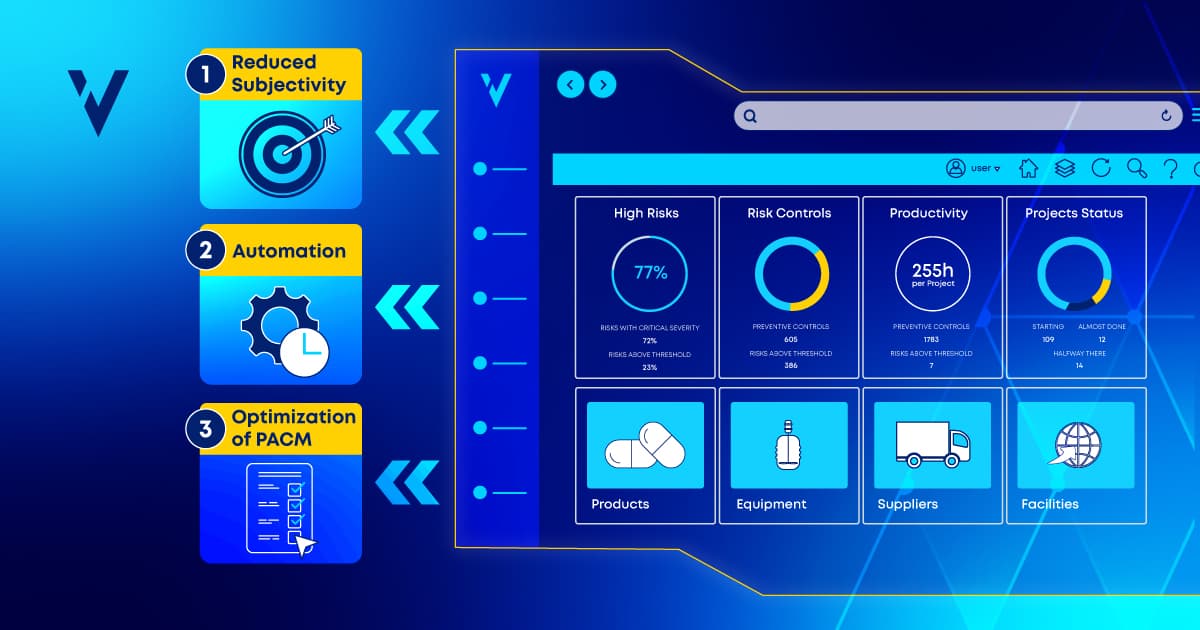An important, and sometimes challenging, step in every product lifecycle is the point when it gets its premarket or a postmarket regulatory approval by a regulator. Luckily, through a combination of good practices for Benefit-Risk Assessment and technology, this has become much easier.
Let’s see how!
A Matter of Benefit-risk Assessment
A key element of every premarket or postmarket regulatory approval concerns the evaluation of the drug’s benefits, risks and risk management options and how do they factor into the regulatory decision.
If you want to market a new drug, the regulatory agency will have to clear it as safe and effective under prescribed conditions, recommended or suggested in the product’s labelling.
Demonstrating effectiveness requires solid evidence. On the other hand, since all drugs can have negative effects, it’s necessary to show that the benefits outweigh the risks.
These benefit-risk assessments look into extensive evidence of safety and effectiveness as well as other factors like the severity of the condition that the drug treats or prevents.
And how is the Risk Assessment Performed
The regulator’s risk assessment takes into account several points.
It typically considers:
- The therapeutic context of the drug. That is, the nature and severity of the condition and how well existing treatments are meeting the patient needs.
- The evidence submitted. Including clinical and nonclinical data, patient experience data, product quality information, reports of adverse events and epidemiologic data.
- The uncertainties about the drug’s benefits and risks. We can reduce uncertainty through careful study design and conduct, but we can’t remove it fully. The regulator thus assesses uncertainty using scientific assessment and regulatory judgement.
- The regulator’s options to reduce uncertainties and manage risks. The regulator considers additional clinical studies to further caracterize the safety, effectiveness, or dose response of the drug.
FDA does this consideration using a Benefit-Risk framework for new drug review. This framework consists of the following points:
- Analysis of Condition
- Current Treatment options
- Benefits
- Risk and Risk Management
Benefit Risk-Assessment for Premarket Drugs and Biologics
When it comes to premarket drugs and biologics, uncertainty is typically higher. However, many of those sources can be anticipated and avoided using the framework:
- Analysis of Condition – which includes the context of use, aspects of the condition and public health implications of the disease.
- Current treatment options – assessing currently approved treatments, their efficacy and safety and the medical need for a new therapy.
- Benefits – which lists the strengths/limitations of the trials and their impact in assessing drug efficacy, the clinical benefits (in general and towards a specific sub-population), and important characteristics of the drug.
- Risk and Risk Management – strengths/limitations of the evidence and potential implications for the drug risks. It also includes adverse events, leve of causal association and potential impact of product quality issues in the drug safety and effectiveness.
When making the Marketing Application, it becomes then important to state key risks and benefits. We’ll tell you more about how to optimize these risks analysis soon!
Benefit Risk-Assessment for Post-market Change Management
Benefit-risk assessment does not end with the regulator’s approval of a drug. The end-to-end lifecycle approach is key to a drug’s benefit-risk assessment since our knowledge of it changes with time.
When a drug which is already being marketed requires a re-examination of its benefit-risk profile, the regulator may conduct a new assessment.
These assessments can be triggered by:
- New medical literature
- Postmarketing studies
- Adverse event reports
- Medication error reports
- Product quality reports
- New data obtained from drugs of the same class
The regulator then conducts the benefit-risk assessment using the Benefit-Risk Framework. Typical outcomes from these assessments include:
- Addition, modification or removal of a Risk Evaluation and Mitigation Strategy (REMS)
- Initiation of postmarketing study requirements
- Labeling changes
- Marketing withdrawal
The regulator will consider the strength of the evidence and the remaining uncertainties about the drug’s benefits and risks.
Optimizing the “Risk” Part of the Benefit-risk Assessment
Benefit-risk assessments involve qualitative, subjective judgments. This judgement weighs data
and information about the drug’s risks and uncertainties within their therapeutic and regulatory context.
In order to collect this data, drug makers sometimes use non-specialized tools, like spreadsheets for example.
But this can bring several challenges such as:
- Keeping an accurate risk history
- Connecting and comparing the data across the organisation
- Evaluate how actions can affect the status of an identified risk
We recommend the departure from this routine where compliance ends up depending on more variables than it should.
Improving Risk Assessment performance requires a unified platform that supports the following functions:
- Identifying, Quantifying and Prioritizing Risks.
- Building Risk Mitigation strategies over the lifecycle of Products, Equipment, Supplies, Facilities and Analytical Methods
- Collaborate with your and other teams independently of your geographic location
ValGenesis can Support Your Benefit-Risk Assessments
Digitalisation will support your decision-making providing you an understanding of the risks each choice brings.
At ValGenesis we use a systematic approach designed to simplify the QRM process, automate and optimize, and then digitally integrate your process. Discover more about our solutions on the topic.


